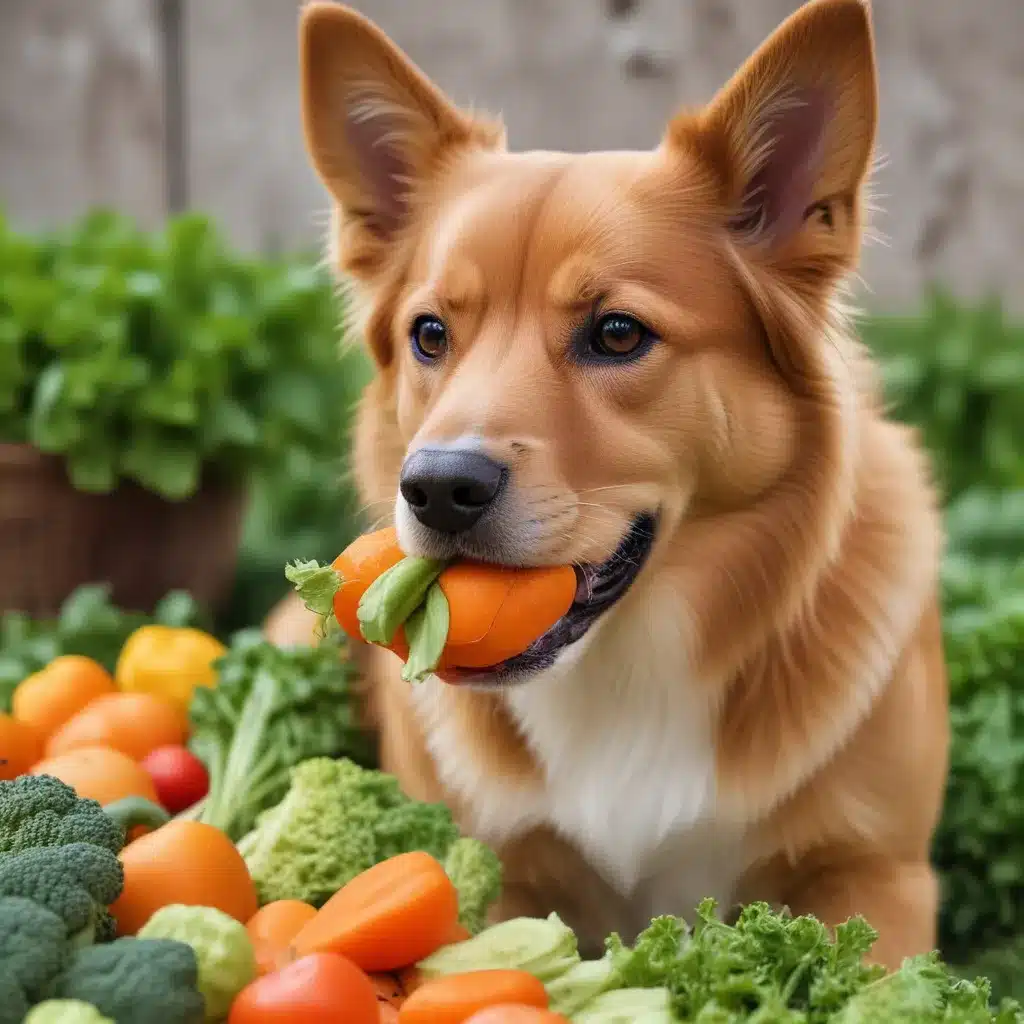
Unleashing the Power of Produce: Exploring What Pups Can (and Can’t) Eat
As dog owners, we often find ourselves staring into the fridge, wondering if we can share our favorite healthy snacks with our furry friends. After all, if it’s good for us, it must be good for them too, right? Well, not exactly. While dogs are omnivores and can indeed benefit from certain fruits and veggies, there’s a whole dog-gone cafeteria of produce that can actually be quite dangerous for our four-legged companions.
The Fruits and Veggies Your Pup Can Enjoy
Let’s start with the good news – there are plenty of delicious and nutritious produce options that are perfectly safe for your pup to enjoy! Apples, for example, are an excellent source of vitamins A and C, as well as fiber, making them a great occasional treat. Just be sure to remove the core and seeds first, as they can pose a choking hazard.
Bananas are another crowd-pleaser, packed with potassium, vitamins, and fiber. Serve them up in moderation, though, as their high sugar content can lead to tummy troubles if Fido indulges too much. Blueberries, on the other hand, are a superfood packed with antioxidants that can help keep your pup’s cells healthy – plus, they’re fun for pups to catch in the air!
Cantaloupe is a refreshing summertime snack, thanks to its high water content and fiber. Just be mindful of portion sizes, as the natural sugars can be hard on dogs with weight or diabetes concerns. And who doesn’t love a good crunch? Carrots make for a wholesome, teeth-cleaning treat that’s rich in vitamins and minerals.
The Forbidden Fruits (and Veggies)
Unfortunately, not all produce is created equal when it comes to our canine companions. Certain fruits and veggies can actually be downright dangerous for dogs, and it’s crucial to steer clear.
Grapes and raisins, for example, can cause kidney failure in dogs, so they’re a hard pass. Avocados contain a toxin called persin that can lead to vomiting and diarrhea, so those are off the menu too. And while onions, garlic, and chives may be delicious in our own meals, they can damage red blood cells and cause anemia in our pups.
Finding the Right Balance
As with most things in life, moderation is key when it comes to feeding your dog fruits and veggies. While they can be a great source of supplemental nutrition, they should never make up more than 10-20% of your pup’s overall diet. Too much of a good thing can lead to tummy troubles, weight gain, or even more serious health issues.
The best approach is to start slow when introducing new produce and keep a close eye on your dog’s reaction. Pay attention to any signs of discomfort, like vomiting or diarrhea, and be sure to consult your veterinarian if you have any concerns. With a little research and a lot of love, you can find the perfect balance of fruits and veggies to keep your furry friend happy and healthy.
So, the next time you’re whipping up a salad or cutting into a fresh melon, remember – your pup may be eyeing your plate with envy, but some of those delicious-looking morsels could do more harm than good. Stick to the dog-approved produce, and you’ll be on your way to a happy, healthy pup in no time!
Fruits and Veggies: The Good, the Bad, and the Ugly
Here’s a quick rundown of some common produce options and whether they get the paw of approval from our canine companions:
| Fruit/Veggie | Safe for Dogs? |
|---|---|
| Apples | Yes |
| Avocado | No |
| Bananas | Yes |
| Blueberries | Yes |
| Cantaloupe | Yes |
| Cherries | No |
| Cranberries | Yes |
| Cucumbers | Yes |
| Grapes | No |
| Mangoes | Yes |
| Oranges | Yes |
| Peaches | Yes |
| Pears | Yes |
| Pineapple | Yes |
| Pumpkin | Yes |
| Raspberries | Yes |
| Strawberries | Yes |
| Tomatoes | No |
| Watermelon | Yes |
| Asparagus | No |
| Broccoli | Yes |
| Brussels Sprouts | Yes |
| Carrots | Yes |
| Celery | Yes |
| Green Beans | Yes |
| Mushrooms | No |
| Onions | No |
| Peas | Yes |
| Spinach | Yes |
As you can see, there’s a whole doggy buffet of fruits and veggies that are perfectly safe and even beneficial for our canine companions. But it’s crucial to steer clear of the “no-go” options, as they can range from mildly upsetting to downright dangerous for our pups.
The Bottom Line: Moderation is Key
At the end of the day, while fruits and veggies can be a great way to add some extra nutrition and variety to your dog’s diet, they should always be fed in moderation. Stick to the approved produce, watch out for any signs of distress, and consult your vet if you have any concerns. With a little care and attention, you can keep your furry friend happy, healthy, and enthusiastically wagging their tail at mealtime – no matter what’s on the menu.

